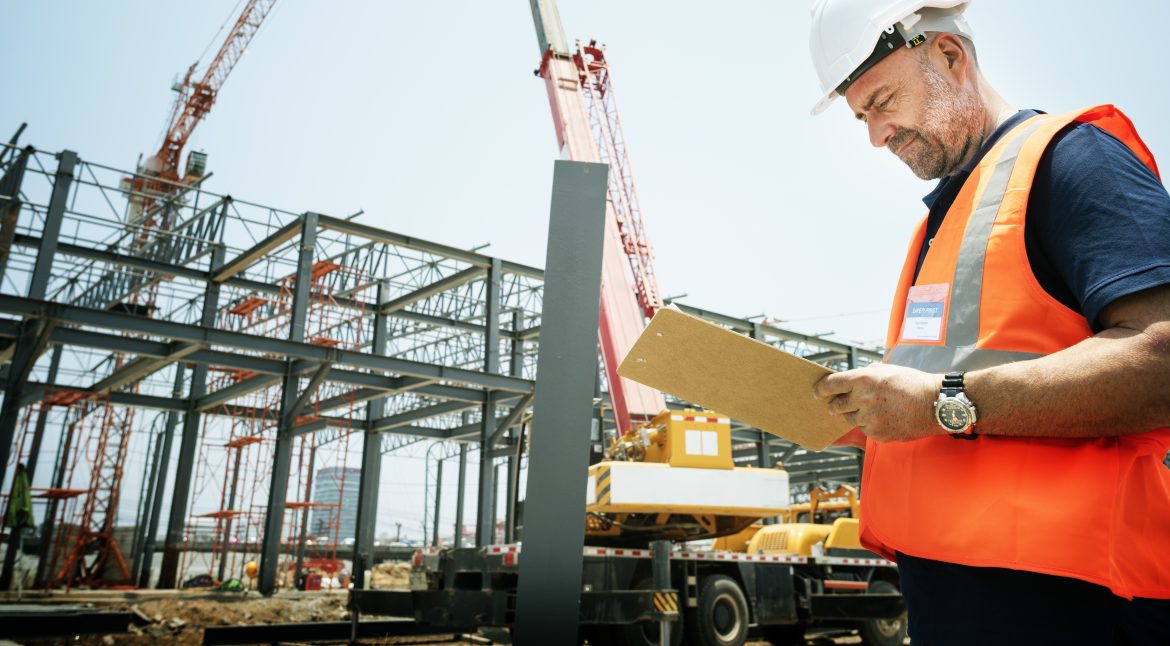Worker safety is a concern for all employers. Aside from the obvious benefit of potentially saving lives, worker safety ensures that the workplace is more successful by helping the company retain workers, build goodwill among employees and customers alike, and protect and enhance the company’s brand.
When thinking of worker safety, one tends to think of protective gear such as hardhats, steel-toe boots, safety goggles, and other equipment, but in today’s workforce, ID tags are an important component of worker safety. They communicate vital information for the employee when the employee cannot, potentially making the difference between life and death. For a variety of such innovative and life-saving products, explore our store.
This article will look at worker safety measures through the years, leading up to the benefits of modern-day ID tags.
Table of Contents
- Tracing Back: Early Days of Worker Safety
- Pre-industrial Revolution Safety Measures
- Onset of Industrial Safety Protocols
- The Emergence of Identification Systems in Workplaces
- The Initial Rational: Why Identification Became Necessary
- The Birth of ID Tags: A Historical Perspective
- The Modern-Day Imperative of ID Tags in Safety Protocols
- Features and Advancements in Modern ID Tags
- Vital ID’s Role in Advancing Worker Safety with ID Solutions 250
- The Road Ahead: Future Trends in Worker Identification and Safety
- Frequently Asked Questions (FAQs)
Tracing Back: Early Days of Worker Safety
The desire to keep workers safe has long been a driving force in innovation, with important developments arising in response to the dangerous conditions encountered by employees in various industries. From pre-industrial days to modern times, the development of safety measures and protocols has been responsible for safeguarding the workforce.
Pre-industrial Revolution Safety Measures
In the pre-industrial area, safety measures often didn’t exist, or if they did, they were rudimentary at best. The workforce was dominated by agriculture and manual labour, both of which came with hazards that included harsh weather conditions, risk of falls, and the potential for injury from associated tools and equipment.
Concern for worker safety certainly existed, though it was often the result of self-interest, rather than any moral obligation to employees. Employers knew that a sick or injured worker would be less productive and might even become a burden to the company. Because of this, some basic safety measures were put in place, but typically with an eye toward protecting the employer’s investments.
It may be surprising to some that medieval guilds instituted various safety measures. Apprentices were trained under strict supervision and provided protection when engaged in hazardous tasks. Guilds also controlled working conditions and hours of work, and supported members when they were ill or facing difficult times. Despite this, safety measures were basic at best and most workers toiled in dangerous conditions.
Onset of Industrial Safety Protocols
With the arrival of the Industrial Revolution, worker safety entered a new era. The risks faced by workers increased significantly as machinery and factories became widespread. Industrialization brought with it a growing demand for better working conditions, particularly following the publication of “The Condition of the Working Class in England” by Friedrich Engels in 1845, which created public outrage by revealing the living and working conditions of the working class.
In the following years, Factory Acts were passed in several countries, such as the United Kingdom’s Factories Act of 1833, which was aimed at protecting child workers from exploitation. These Factory Acts also limited working hours and addressed safety concerns. Children, for example, had frequently been used to climb under machinery, which far too often resulted in severe injuries such as the loss of limbs or even death. Elsewhere, girls working in match factories were exposed to phosphorous fumes resulting in phosphorous necrosis of the jaw, more colloquially known as phossy jaw.
The introduction of safety protocols eventually put an end to the conditions that caused so much harm to workers.
The Emergence of Identification Systems in Workplaces
As new protocols were adopted and safety measures put into place, ID tags became a part of worker safety for several reasons, such as enhancing security and facilitating more efficient organization.
The Initial Rational: Why Identification Became Necessary
As the evolution of the workplace progressed, resulting in the advent of larger corporations, there was a growing need for a standardized system of employee identification. This allowed for enhanced security by allowing only authorized personnel to access specific areas, but it also allowed for tracking of attendance and the simplification of payroll processes.
The Birth of ID Tags: A Historical Perspective
Even in our earliest days, forms of identification were used to indicate one’s role and status. In ancient Rome, parents would register their newborn to receive a birth certificate and Auxiliaries who fought for the Roman army received a bronze military diploma following their period of service.
In terms of worker IDs, we can again look to the Industrial Revolution, where the use of identification tags gained more traction. With factories growing in size, managers and supervisors needed a method of recognizing all employees, resulting in the implementation of new identification methods.
In the mid-19th century, workers would be assigned colour-coded badges that differentiated them according to their role or department, streamlining coordination and communication, and resulting in an increase in productivity.
As advances were made in technology, changes were made to identification badges, with the addition of names and photographs, along with other relevant information. By the 20th century, identification tags could be fitted with magnetic stripes and later replaced by proximity cards, both of which could be used to limit access to restricted areas.
More recently, identification systems have advanced to the point of using biometric technology, strengthening security, and streamlining other workplace processes. The ability to store large amounts of data in miniature devices means that identification tags have the ability to carry more information about employees than ever before.
The Modern-Day Imperative of ID Tags in Safety Protocols
Today, ID tags play a significant role in the workplace, with modern technology making them indispensable in safeguarding lives and enhancing security. This section discusses them in the context of the modern workplace.
Accountability and Tracking
ID tags play a pivotal role in fostering accountability and tracking. In many workplaces, particularly those with security concerns, employees are required to wear ID tags that identify them as individuals. This makes it easier to monitor their actions and movement while on the premises. This helps to encourage responsible behaviour and allows for easy identification in the event of any unusual incidents. If an ID tag is equipped with GPS or RFID technology, it will be possible to track the employee in real time, which can be useful in an emergency or during evacuations.
Emergency Responses and Medical Information
During an emergency, being able to respond quickly and precisely could save an employee’s life. Unlike those of days gone by, modern ID tags can carry more than just a name and picture, and may contain important information such as known allergies, pre-existing conditions, and emergency contacts. With this information, first responders have immediate access to critical details that allow them to provide the appropriate medical care at a time when every second matters. To understand the importance of worker IDs in ensuring safety, learn more here.
Enhancing On-site Security
Security is a growing concern for many businesses and corporations. On-site security measures can be enhanced with the use of ID tags that can regulate entry to specific zones. This allows businesses to better protect sensitive information and valuable assets, maintaining a secure environment. ID tags with features such as biometrics or encryption also reduce the possibility of identity theft, which is another increasingly common problem.
ID tags, beyond identifying employees, can also be used to authenticate visitors to a worksite and can be used to track outsiders during their time on the premises. This helps in identifying potential threats and makes it easier to respond in a timely manner.
As the technology implemented in ID tags continues to develop, these deceptively simple devices will become more efficient and versatile, making them an invaluable addition to any business.
Features and Advancements in Modern ID Tags
Identification technology, as with all technology, has changed considerably over the years. Modern tags have evolved from the most basic, coloured badges, to remarkably sophisticated devices with multiple advanced features, revolutionizing the way we identify individuals at work in various industries.
Durability and Material Improvements
With the growing importance of identification tags, it is necessary to use more durable materials in their construction. Older ID tags were prone to wear and tear, requiring frequent replacement. Today’s tags are created with materials like polycarbonate, metal alloys, and reinforced plastic. The result is an ID tag that lasts longer. This reduces replacement costs, but also to ensures that the tags remain useable and legible with long-term use in harsh environments.
Tech Integration: From QR Codes to NFC
Among the notable advances in modern identification tags is the integration of technology like QR codes and Near Field Communication (NFC).
QR codes have become popular owing to their ability to store a considerable amount of information, such as the employee’s role or function in the company, their security clearance, and their medical history.
NFC provides wireless communication between ID tags and other devices, allowing employees to simply tap their tag on special readers to provide information, gain access to restricted areas, and more. ID tags with NFC can also be linked to a digital profile, making it easy to update and manage information.
Customization and Worker Comfort
Personalization and worker comfort have become important aspects of modern identification tags. Customizing tags allows them to be more closely associated with the company that uses them, becoming part of the corporate identity and creates a more uniform look for all employees that not only has visual appeal, but serves the purpose of making employees readily identifiable to other workers and outsiders.
Employee comfort has also influenced current design, with sleeker, more ergonomic designs replacing older designs that featured sharp edges and bulky clips. Many are now worn on lanyards or come with a magnetic clip, making the tag more comfortable to wear for extended periods.
Vital ID’s Role in Advancing Worker Safety with ID Solutions 250
Vital ID is the leader in promoting worker safety with creative and advanced ID solutions. We understand that workers in some of the most dangerous environments rely on us to help ensure their safety, but why should you choose us?
Product Innovations
Worker IDs have come a long way over the years, but they are still improving to become more efficient and offer greater security. Vital ID continues to push the boundaries of what ID tags can be and what they can do, in a constant bid to keep employees safe. Standards today are considerably higher than they were even just a few years ago, but today’s best practices can always be better, and Vital ID is leading the way in worker safety evolution.
Ensuring Quality and Reliability
Too many companies build their products to meet the minimum safety requirements, but at Vital ID the minimum standards are there to show us what we need to surpass. When it comes to the safety of your workers and potentially saving lives, are you comfortable with doing the minimum?
We aren’t.
At Vital ID, we work hard to ensure that you get the absolute best quality and reliability available, because while a worker ID may seem like a simple thing under normal circumstances, it’s a critical part of worker protection during on-site emergencies.
The Importance of Customer Trust
When an employee uses a Vital ID product, they are putting their faith in us, and that’s something we take seriously. We understand that our worker ID products can save lives, so that’s a trust we will never break or put at risk.
For more information or to get in touch with us, please contact us.
The Road Ahead: Future Trends in Worker Identification and Safety
Technology never stands still and that impacts virtually everything, including ID tags. Some of the most significant trends that stand to influence the development of worker ID are the Internet of Things (IoT) and smart workplace solutions, a focus on environmental and sustainability initiatives, and a demand for greater worker safety.
IoT and Smart Workplace Integrations
The Internet of Things, or IoT, allows various physical devices to exchange information with one another via embedded sensors, software, and other technologies. Wearable devices that are equipped with sensors can monitor vital signs, notifying supervisors in the event of an anomaly, alerting them to incidents requiring immediate action, or even highlighting potential issues. To understand how Vital ID is leveraging technology to improve worker safety, explore our mobile app.
Environmental and Sustainability Trends
Protecting the environment and ensuring sustainability are topics at the forefront of many decisions being made by both consumers and businesses. With companies adopting eco-friendly practices by reducing their use of harmful chemicals and implementing energy-efficient technologies, they are also promoting worker health and well-being by providing a workplace free of harmful substances.
The Global Push for Enhanced Worker Safety
There is a strong global movement pushing for enhanced worker safety in all industries. Governments and international organizations are teaming up with businesses to find new ways of ensuring employee well-being, introducing new regulations and guidelines that will enforce safety standards and encourage responsible business practices. This global push is resulting in companies adopting advanced identification and safety measures, creating a greater awareness of workplace safety.
The Integral Role of Worker ID in Workplace Safety
In the modern workplace, ID tags are providing a quick, accurate means of identifying personnel which allows for the easy tracking of employees in case of emergency or during evacuation. GPS and RFID enables continuous monitoring to identify risks that could lead to accidents and also to prevent unauthorized access to hazardous zones, reducing the likelihood of injury.
ID tags have become indispensable tools in the modern workplace, enabling enhanced security and providing critical information in emergencies. To explore a range of advanced, durable, and user-friendly ID solutions that cater to the varying needs of different workplaces, visit Vital ID’s store.
Frequently Asked Questions (FAQs)
Here are some frequently asked questions regarding worker ID tags.
-
How Do ID Tags Enhance Emergency Response Times?
With the appropriate technology, ID tags can help locate injured employees in stressful situations such as fire, evacuations, and more. With GPS tracking, first responders can be directed to the employee quickly and efficiently.
-
What are the Typical Materials Used in Modern ID Tags?
Today’s tags are created with various sturdy materials such as polycarbonate, metal alloys, and reinforced plastic.
-
How Do Companies Ensure the Privacy of Worker Data on ID Tags?
Companies will implement encryption and secure communication protocols to ensure that only authorized personnel can access the information.
-
Are There International Standards for Worker ID Tags?
There are international standards for worker ID tags, such as ISO/IEC 18000-6 for RFID technology used in ID tags. In addition, there may be specific regulations put in place in various countries and industries. This is all part of modern workplace safety protocols.
-
How Do Tech Integrations Enhance the Functionality of ID Tags?
Tech integration allows for additional features and functionality to be added to the ID, such as attendance tracking, and the ability to enter and exit secure areas seamlessly. These advancements in worker ID tags lead to greater safety for all employees.
To learn more about the wide range of worker and emergency IDs available from Vital ID, click here!



